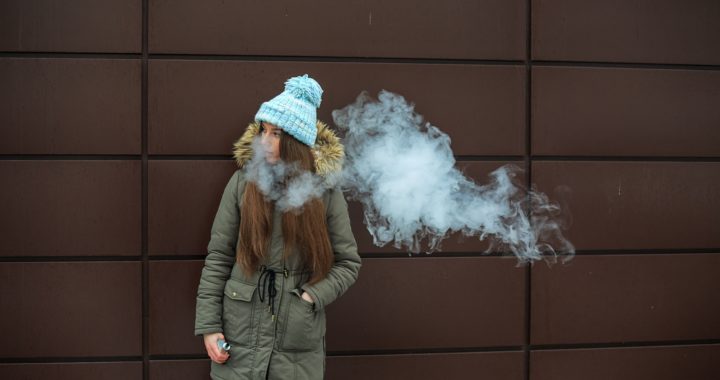By Melissa LaChapelle
Vaping by U.S. teens has reached epidemic levels and is impacting our youth in Putnam County. According to one Putnam County high school junior, approximately 60% of her classmates are vaping. When she was a freshman, vaping was rare. She believes the number of students who are vaping has risen exponentially since she started high school just 2 years ago.
What is “vaping?” Vaping is the act of inhaling and exhaling the vapor from an e-cigarette, which is a battery-operated device containing liquid, nicotine, flavorings, and chemicals. A small heating mechanism changes the liquid into vapor, which can then be inhaled. While the long-term risks of vaping are yet to be known, studies raise concern about the potential toxic effects of the chemicals being inhaled and the presence of nicotine, an addictive substance. A study presented in the April 2018 issue of Pediatrics concludes: “The presence of harmful ingredients in e-cigarette vapor has been established; we can now say that these chemicals are found in the body of human adolescents who use these products…Overall results reveal significantly greater toxicant exposure in adolescent e-cigarette users compared with their nonusing peers.”
Vaping is happening during school. According to several students in Putnam County from different schools, students are vaping in the bathrooms and locker rooms. Sometimes, they are vaping right in the classroom. This is by no means unique to Putnam County; vaping during school hours is a problem across the Unites States. “The bathroom shouldn’t smell like blueberry flavoring,” states teacher Christine Pankrantz of Oklahoma (NEAtoday.org). Cam Traut, a school nurse in Chicago reports, “It’s happening in the hallways, it’s happening in the bathrooms, we have even had a kid a couple years ago vaping in the classroom” (NEAtoday.org).
Where do students obtain vapes and vape products? One way is by walking right into vape stores and buying them. The Tobacco-21 law, signed by Putnam County Executive MaryEllen Odell in January 2019, has raised the legal age to buy tobacco and e-cigarettes from 18 to 21; however, store owners and attendants do not seem to be abiding by this law. Truth Initiative found that 75% of teens who used vapes in the past 30 days obtained them from a physical retail location (www.truthinitiative.org). These numbers are alarming to say the least. In addition to physical stores, teens can easily purchase vapes on the internet, and online stores do not always require proof of age.
Vaping has turned into a major epidemic here in Putnam County and across the U.S. Less than a decade ago, the e-cigarette was an obscure product marketed as a safe alternative to conventional cigarettes by a single company in China—it has now turned into a three-billion-dollar global industry. The biggest competitor to vaping products is the Juul. Since its launch 2 years ago, the Juul has become one of the most popular e-cigarettes on the market. It has been called the “iphone of ecigs” and has gained a cult following among young adults. From its easy use, attractive flash-drive shape, USB charger that pops right into a laptop, and ads that are filled with attractive young models dancing in clothes only teens would wear, the intention is very clear: Juul products are being marketed to children and teens. Add in the names of their flavors such as cool cucumber, Crème Brule, mango, and mint, and teens are intrigued. The worst part—it is working. Juul sales are up 300% from last year. The number one customer, teens!
So, what can be done? One way to prevent teens from vaping is to make the laws stricter. Research published in February 2019 (www.tobacco21.org) indicated that teens living in cities or towns that are strict on retail sales are a third less likely to try e-cigarettes compared to those living in areas with lax regulation. Putnam County’s recent decision to pass the Tobacco-21 law is a huge step in the right direction. For parents, educators, and caregivers, the best forms of prevention are open communication and education. As a prevention educator, my goal is to visit high schools in Putnam County and get the message out. For parents, keeping an open conversation about vaping is imperative–talk to your teen about the risks, familiarize yourself with products and language, and help your children quit vaping if they have already started.
